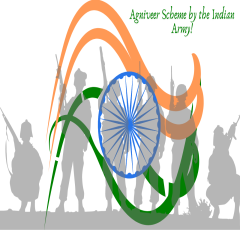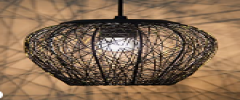
India's Chandrayaan-3 moon mission

Indian Space Research Organization's (ISRO) Chandrayaan-3 is a lunar project that aims to soft-land a lander and rover on the lunar south pole.
It is a continuation of Chandrayaan-2, which orbited the Moon successfully in 2019 but was unable to land its lander and rover.
On July 14, 2023, the Satish Dhawan Space Centre in Sriharikota, Andhra Pradesh, India, launched the Chandrayaan-3 mission. On July 20, 2023, the spacecraft successfully inserted itself into lunar orbit. On August 23, 2023, the lander and rover are anticipated to touch down close to the lunar south pole.
Three main goals of the Chandrayaan-3 mission are as follows
Chandrayaan-3's lander module is known as Vikram, and its rover is known as Pragyan. A camera, a spectrometer, and a laser altimeter are just a few of the scientific tools that the two-meter-tall lander Vikram is outfitted with. The six-wheeled Pragyan rover can move across the lunar surface up to 500 meters.
For India's space program, the Chandrayaan-3 mission represents a significant advancement. India's capacity to execute challenging space missions would be shown by Vikram and Pragyan's successful lunar landing, which would also yield important Moon-related scientific information.
The main distinctions between Chandrayaan-2 and Chandrayaan-3 are as follows
A continuation of Chandrayaan-2, Chandrayaan-3 expands on the expertise and understanding acquired during the first mission. A location that has never been studied by a previous lunar expedition, the lunar south pole, is where Chandrayaan-3 is planned to land.
SHAPE (Spectro-polarimetry of HAbitable Planet Earth), a new payload on Chandrayaan-3, is intended to do research on Earth's atmosphere and climate from the lunar orbit.
The Chandrayaan-3 mission is a remarkable accomplishment for India's space program and will undoubtedly have a substantial impact on our knowledge of the Moon.
The Space Applications Centre of the Indian Space Research Organization (ISRO) in Ahmedabad, Gujarat, is in charge of overseeing the mission.
The Chandrayaan-3 mission represents a significant advancement for India's space program and will undoubtedly have a significant impact on our knowledge of the Moon.
Here are a few of Chandrayaan-3's scientific goals
The Chandrayaan-3 mission is anticipated to deliver important information about the Moon that will aid researchers in understanding its past and present. Furthermore, Chandrayaan-4, which is scheduled to launch in 2024, and other upcoming Indian lunar missions are anticipated to benefit from the mission's success.
The Chandrayaan-3 mission is a remarkable accomplishment for India's space program and will undoubtedly have a substantial impact on our knowledge of the Moon. Additionally, it is anticipated that the mission will encourage young people in India and other countries to seek jobs in science and technology.
The Chandrayaan-3 crew is sure that they can overcome these difficulties and finish the mission successfully.
They have extensive experience with the mission and a thorough awareness of its difficulties.
Even while the Chandrayaan-3 mission is a significant undertaking, it is also incredibly exciting. The group is convinced that they can change the course of history and significantly advance our knowledge of the moon.
The Chandrayaan-3 mission marks a huge accomplishment for India's space program and will undoubtedly benefit the entire planet. This knowledge is intended to be useful. In case you have any other queries, just let me know.
The following are some possible concerns associated with the Chandrayaan-3 mission
The Chandrayaan-3 mission is, all things considered, a high-risk, high-reward mission.
The squad is sure that they can overcome the difficulties and finish the task successfully. Though it's always possible, the mission could go wrong.
On August 23, 2023, the lander and rover made a successful landing on the lunar surface.
An important turning point for India's space program was the successful landing of Vikram and Pragyan on the lunar surface. An Indian spacecraft has successfully landed on the Moon for the first time. It is anticipated that the mission will yield insightful information about the lunar surface and subsurface composition. Additionally, it is anticipated to open the path for upcoming lunar expeditions by India.
On the lunar surface, the lander Vikram and the rover Pragyan are both in operation.
Vikram, the lander, and the base station are no longer in contact.
Vikram, the lander, has been unable to get back in touch with the base station. The crew has determined that it is improbable that the lander will be found. The lunar surface is still being explored by the rover Pragyan. The team is gathering important information regarding the composition of the lunar surface and subsurface.
The team is still working on the expedition, but they are now concentrating on the rover.
The Chandrayaan-3 mission is hampered by the loss of contact with Vikram, but the team is still able to use the rover to gather useful data. It is anticipated that the mission will run until the end of 2023.
Pragyan, the rover, has successfully finished its mission. It has covered 500 meters of the lunar surface in comprehensive exploration and gathered important information about the lunar surface and subsurface composition. Now the mission is complete. After being deactivated, the spacecraft will keep orbiting the Moon until it eventually touches down.
Despite losing contact with the lander, Vikram, the Chandrayaan-3 mission was successful. The Pragyan rover was able to gather important information regarding the lunar surface and subsurface composition. The mission is a significant accomplishment for India's space program and will undoubtedly open the door for future lunar missions by India.






















 Digital Voice Recorder
Digital Voice Recorder  Healthy Ingredients
Healthy Ingredients  Unreal Engine 5 For Beginners Learn The Basics Of Virtual Production
Unreal Engine 5 For Beginners Learn The Basics Of Virtual Production  Top Rated From Amazon
Top Rated From Amazon  Best Sellers On Amazon
Best Sellers On Amazon  LCD Writing Tablet
LCD Writing Tablet  ELECTRONIC ACCESSORIES
ELECTRONIC ACCESSORIES  Bathroom Mirrors
Bathroom Mirrors  Dual USB Car Charger
Dual USB Car Charger  BEST SELLER TOP10
BEST SELLER TOP10  Apple iPhone
Apple iPhone  The Secret Email System
The Secret Email System  Acer Laptop
Acer Laptop  NordVPN
NordVPN  SOFAS
SOFAS  iPhone cable
iPhone cable  Artificial Intelligence
Artificial Intelligence  Crocs
Crocs  Adidas Shoes
Adidas Shoes  Realme Smart Phone
Realme Smart Phone  ASPINAL LONDON
ASPINAL LONDON  Essentials for Gamers
Essentials for Gamers  Online Marketing
Online Marketing  Best Robotic Vacuum Cleaners
Best Robotic Vacuum Cleaners  The Click Engine
The Click Engine  Best Phone
Best Phone  Pet Care Products
Pet Care Products  Prime Video
Prime Video  RPM 3.0
RPM 3.0  Samsung Mobile
Samsung Mobile  Home Decor Items
Home Decor Items  Graphics & Design
Graphics & Design  SEO Checklist
SEO Checklist  Stylish Sneakers by Red Tape
Stylish Sneakers by Red Tape  Hot Bags For Pain Relief
Hot Bags For Pain Relief  Wristbands
Wristbands  Kitchen Daily Use
Kitchen Daily Use  TitTok Revolution
TitTok Revolution  Wall Lamp
Wall Lamp  Duke T Shirts
Duke T Shirts  Smart Doorbell
Smart Doorbell  Wireless Bluetooth Earphones
Wireless Bluetooth Earphones  Online Technology Classes
Online Technology Classes  Hanging Lights For Living Room
Hanging Lights For Living Room  Men Clothing
Men Clothing  Amazon Best Selling Products
Amazon Best Selling Products  Air Purifier for Home
Air Purifier for Home  Dell Laptop
Dell Laptop  All Wireless Products
All Wireless Products  Sennheiser
Sennheiser  Echo Dot - Smart speaker with Alexa
Echo Dot - Smart speaker with Alexa  Kitchen Tap
Kitchen Tap  Puma (Clothing & Accessories)
Puma (Clothing & Accessories)  NordLocker
NordLocker  Door Handle Collection
Door Handle Collection  Creative Brief For Video Shoot
Creative Brief For Video Shoot  4k Projector For Home
4k Projector For Home  Women Fashion
Women Fashion  Best Selling Books
Best Selling Books  ASUS Laptop
ASUS Laptop  Favorite Company (Cuelinks)
Favorite Company (Cuelinks)  Smart Watches
Smart Watches  Hello Theme
Hello Theme  One World Collection
One World Collection  HP Laptop
HP Laptop  Best Home Appliances
Best Home Appliances  Unlimited access to classes on illustration, photography, design, film, music
Unlimited access to classes on illustration, photography, design, film, music  NordPass
NordPass  Rakhi
Rakhi  Wireless Gaming Mouse
Wireless Gaming Mouse  Motion Sensor Light
Motion Sensor Light  Only For The United States
Only For The United States  1150+Trendy kids coloring pages Bundle
1150+Trendy kids coloring pages Bundle 


















